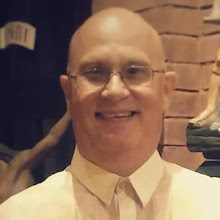The organ is not called the king of instruments for nothing.
A fine organ can fill a great hall with glorious sound, make a church
congregation sing, make mourners cry and at the same time can whisper softly
and twitter with the birds. As an organist friend of mine once said while
touring a group around the installation of a fine, vintage 1918 Austin
It then goes without saying that any concert hall worth its
salt has to have a fine concert pipe organ. Many do not, notably cross state
rival St Louis and Carnegie Hall in New York
So a fine new hall, such as Helzberg Hall, had to have a
fine pipe organ. And who better to build it than Casavant Frères of Quebec
On March 10 and 11, renowned organist James Davis Christie,
organist for the Boston Symphony and chair and professor of organ at Oberlin
Conservatory, dedicated the Casavant Organ, opus 3875 in a solo recital.
Christie told the audience he thought op. 3875 was the best
Casavant he has ever played, “and I have played many”, he remarked. Celebrating
the organ’s French heritage, his program was heavy on the French repertoire
(annoyingly ignoring Messiaen, Tournemire and Widor) but included works ranging
from 1644 to the present day.
The organ is magnificent and is a joy to see with its funky
wood covered, angled pipes. I just seemed to notice a lack of earth shattering
power and an overall mellowness that is probably best for a concert hall organ,
but will not overwhelm you like the best of the cathedral organs. Op. 3875 is a
fleet lady, with clear and precise action, allowing the organist to trill and
throw off scales like a piano. She could handle the smoothest of legato, as
demonstrated by Christie’s own “Élégie” (2006, the most recent work on the
program) and the lightest of skittering trills as in Italian Giuseppe
Gherardeschi’s (1759-1815) amusing Rondo.
Where I wished for more power was in the major French work
the Sonata # 1 in D for Organ by Alexandre Guilmant. Christie played two
movements of the work, the finale and the “Pastorale”. The simple and charming
Pastorale came off best, benefiting from the aforementioned mellow qualities of
the organ and an incredible Voix Humaine stop. The finale needed some more
depth and clarity in the lowest registers. Same with the famous Bach Toccata
and Fugue in d, which seemed a bit rushed and just lacking that wall shaking,
buzzing power in the lower notes.
Still a magnificent achievement and likely one of the top 5
concert hall organs in the country. The mellowness and restrained power
qualities that detracted a bit from the solo recital are ideal for an organ
with orchestra. In June, we get to hear op. 3875 in the famous Saint-Saëns
Organ Symphony.
Out of the box, Op 3875 is really quite an impressive work.
A world of organists and organ music awaits this grand lady.



No comments:
Post a Comment